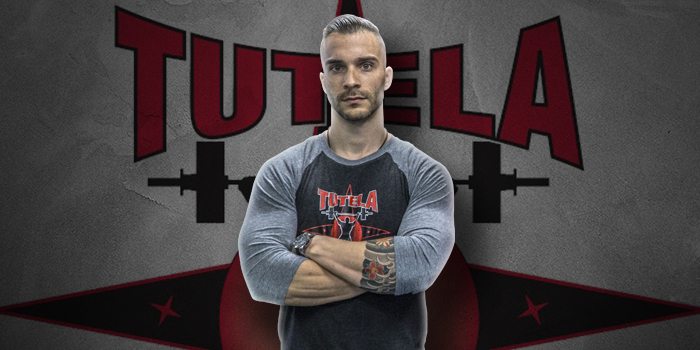
If you are a fight fan like me, you’ve seen it before. A fighter comes out who is superior to his or her opponent. They look strong the first round and put on a clinic. Then suddenly, somewhere in the mid-rounds, the fighter who looked superior starts to get sloppy. Their mouth is open as they desperately try to breathe.
Their opponent begins to capitalize. They know they’re tired, so they start to take more chances. They start to land punches that weren’t landing earlier. Takedowns are starting to score that they wouldn’t go for in the earlier rounds.
The fight ends and the better fighter loses purely due to fatigue.
RELATED: Training Frequency for Fighters
Or, there may be a fighter who has superior skill. But their opponent (who obviously has some skill of their own) completely overpowers the weaker, more talented fighter and the fight is lost based on superior brute strength of their opponent.
That’s because, in MMA, boxing, wrestling, kickboxing or any other combat sport, the competitor who has the skill, heart, strength, speed, explosiveness, and conditioning will always have an advantage.
With the level of skill we witness these days, you MUST be more well-rounded in your strength and conditioning than ever before in order to give yourself an edge. Your strength and conditioning program needs to be intelligently designed where each facet of training is emphasized.
Today I want to get into the general aspects of preparing yourself for your combat sport.
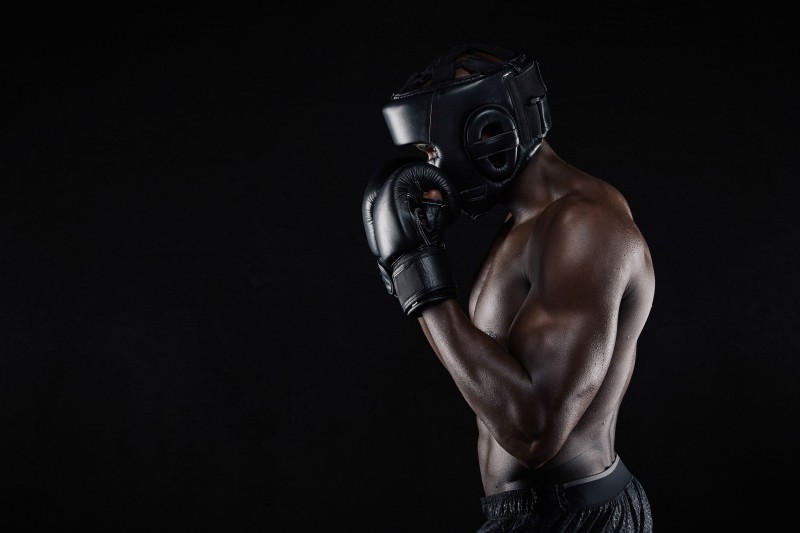
Absolute Strength and Relative Strength
As a combat athlete, you not only need to possess absolute strength (amount of weight lifted, 1RM) but you also need to emphasize relative strength (strength in comparison to body weight, such as number of chin-ups performed).
Combat athletes need to develop their absolute strength by performing big, compound movements like the bench, squat and deadlift (and/or their variations). To do so, pristine form must be learned and executed. For athletes working on maximal strength, I typically do not prescribe a 1RM. Instead, we focus on 3RM's or 5RM’s simply because the risk of a 1RM isn’t worth the reward, in my opinion.
Of course, assistance work is extremely important to help improve the athlete’s absolute strength and help develop a well-rounded, balanced fighter.
There is an infinite number of assistance exercises you can choose from, and the exercises should be selected based on your fighter’s specific needs. However, typically you want to incorporate vertical and horizontal pulling (which we will go into further), vertical and horizontal pressing, unilateral upper and lower body work, bilateral upper and lower body work, elbow flexion and extension, rotational movements, neck training, and core strength and stability into your template.
As far as relative strength goes, bodyweight training is very beneficial for combat athletes. Pull-ups, chin-ups, push-ups, handstands, pistol squats, front levers, and many of the variations out there are critical for fighters.
This type of training will help develop the relative strength needed for fighting, improve general motor skills, and have plenty of carryover to your sport. Work on learning the exercises and getting good at them. Once you do, you can start to add external resistance to make each exercise more challenging.
Strength Endurance
Understand that in combat sports it is useless to be brutally strong but only for the first 30 seconds of the fight. As a fighter, your goal should be to be as strong in the later rounds as you were in the first round.
This is where strength endurance comes in.
You can begin working on your strength endurance once you develop a good level of absolute strength. Assuming you’re already there since you are a trained killer, you can begin working on your strength endurance by handling a light to moderate weight for high reps and near failure.
This may include high rep sets of squats and deadlifts for 15 to 20 reps, a set of chin-ups for one fewer than your max reps, dumbbell presses for one fewer than your max reps, or a variety of barbell complexes.
Keep in mind that high rep sets will leave you sore, which will impede your performance on the mat or in the ring. Be sure to take your training schedule into account when designing your strength training template. Obviously, your skill work is going to hold premise, so be smart about when you’re doing what.
Special Strength and Strongman Training
Strongman training is a great way to develop strength and conditioning simultaneously. This style of training is tremendous for combat athletes due to the instability of the objects you’re training with.
Think about it: Your opponent isn’t going to mimic a perfectly straight and still barbell, just waiting for you to throw him around. He or she is going to be moving all over the place, defending your every move. When you pick up an object like a keg filled with water, the water is going to be sloshing around, making it very difficult and neurologically challenging to stabilize the load and move it where you want simultaneously. This has a great carryover to mixed martial arts, especially due to the chaotic movement.
Use strongman exercises to develop the special strength needed for your sport.
Speed
If you’re in the fight game you already know that speed is critical. Like Mike Tyson said, “Sthpeed Killsth.”
If you’re already working on your hand speed, footwork, and quickness drills in practice, there’s no need to spend any more time on that. What you need to focus on is developing your overall speed. Speed can be developed by simply getting stronger, but specifically working on short distance sprint variations will target your speed training more specifically.
Heavy sled dragging and pushing and hill sprints are also great ways to improve your overall speed. I recommend shorter distances of 10 to 60 yards when emphasizing speed training.
For more advanced lifters, you can spend time working on speed in your strength training template. Using accommodating resistance like bands and chains added to a barbell can help with your rate of force development, or your ability to produce force faster. If you are new to the training world I would hold off on accommodating resistance since you are going to need near perfect technique in order to benefit here. Plus, you’ll want to save this stuff for when you really need a boost getting over plateaus that you’ll eventually hit.
However, once you begin incorporating bands and chains and develop a higher rate of force, your power will simultaneously improve.
Power
Every fighter wants more power. Olympic lifts like the clean and the snatch are great for power development. However, these lifts are very technical and take time to learn. Hire a qualified coach to teach you them so you can actually benefit from the lifts. Otherwise, using different jumping and throwing variations, along with other explosive exercises like the push press, are tremendous for power development.
Typically you’ll want to work on your power when you are fresh, so first in your workout is typically ideal. However, you are a fighter and you need to still possess power in the later rounds. With that said, you should incorporate some type of power training later in your workout when you are fatigued. I wouldn’t recommend super technical lifts like the clean late in your workout because you don’t want to risk getting injured due to fatigue. Stick to jumping and throwing here.
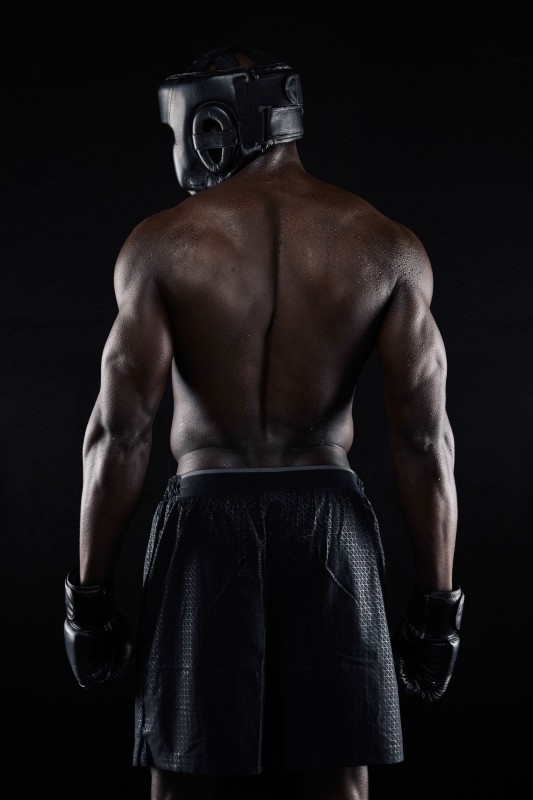
Back Training
Training the upper back is critical for martial artists and combat athletes. If you are strictly a boxer or kickboxer, you are constantly throwing punches. Most of the time there is a significant imbalance between the anterior and posterior musculature, with the anterior side overdeveloped and the posterior severely underdeveloped.
That combination is a recipe for a devastating shoulder injury.
Or, if you are a grappler, not only are you at risk for shoulder injuries, but think about the positions you’re consistently in or what you’re trying to do to your opponent. Most of the time you’re trying to pull them into certain positions, which requires a lot of work from your upper back. A strong upper back can help you get your opponent in the position you’re looking for.
To develop a well-balanced back you need to focus on vertical and horizontal pulling. Row variations, chin-ups, pulldowns, Y-W-T-L’s, blackburns, and band pull-aparts should be staples in your training program. Try to do twice the amount of horizontal pulling than vertical pulling to really place an emphasis on shoulder health.
Grip Training
A strong grip is an absolute must for any MMA fighter or grappler. Loaded carries, pinch plate holds, fat bar holds, and fat bar hangs are some of the exercises I use to develop my athlete’s grip strength.
You can also grab yourself a bucket and fill it with sand or rice, dig your hand into the middle of it, and open and close your hand for reps. I also recommend grabbing a Captains of Crush gripper to work on your grip strength.
Conditioning
Now we get to the most critical aspect of a fighter’s training routine. We all know how important conditioning is for a fighter. Just look at Floyd Mayweather’s ability to fight in the 12th round after tiring out his opponents. He looks just as good, if not better, in the 12th round as he does in the first. Love him or hate him, it’s no surprise that he’s 49-0.
I’d like to preface this section by stating that strength plays a huge roll in conditioning. The stronger you are, the more work you’ll be able to accomplish with less effort, which leads to more reserved energy. However, if strength were the only component of conditioning, powerlifters would be the most conditioned guys and girls on the planet. However, it is important to know that strength does play a role.
Now, as a fighter, you obviously need to address more conditioning. Keep in mind that practicing your sport, or in this case sparring, is the best form of conditioning you can do to prepare for your sport. Aside from your sparring, we need to develop more work capacity by improving your aerobic and anaerobic thresholds.
You can develop your aerobic system by things like jumping rope and tempo runs. For anaerobic work, you can work on different kinds of intervals like sprinting and different kinds of conditioning circuits or HIIT training. It’s important to develop both your anaerobic and aerobic systems since combat sports are mixed energy system sports.
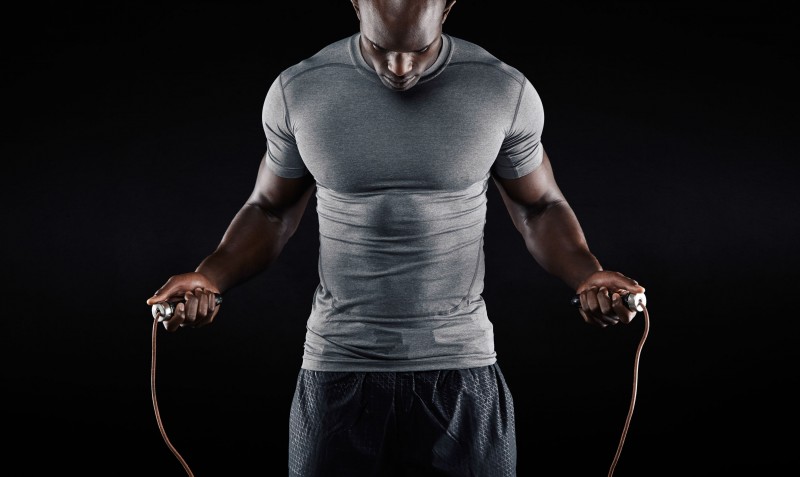
Tying It All Together
To be elite in combat sports these days you need to be more well-rounded in your strength and conditioning than ever. You’ll need to possess absolute strength, so work on big, compound, multi-joint exercises like the bench, squat, deadlift and their variations.
Relative strength is also extremely important, so incorporate bodyweight and gymnastics training into your routine.
Strength endurance is needed so you can still possess a significant level of strength in the later rounds. Work on higher reps sets of 15-20 at times to develop your strength endurance. Just remember that high rep sets can leave you extremely sore, so don’t program them before any big sparring sessions, fights, or heavy skill training days.
Strongman training is a great way to develop the special strength needed for your sport due to the odd objects you’ll be lifting. You’ll also develop a level of conditioning from strongman training.
Speed and power are important for obvious reasons. Sprint, jump, and throw to work on both. Once you advance in your training routine, start to add in accommodating resistance like bands and chains to help develop your rate of force.
Properly developing the upper back is essential for shoulder health. Always pull more than you push.
A strong grip is a must for MMA fighters, grapplers, and wrestlers. Use the exercises listed above to develop a bone-crushing grip.
And finally, strength is useless without conditioning. Utilize circuits, barbell complexes, tempo runs, jumping rope, sprints, bleacher runs, and hill sprints to develop both the anaerobic and aerobic energy systems. Just remember that practicing your sport is always the best form of conditioning you can do.
Tie this all together, along with an iron will and high-level skillset, and I guarantee you’ll become even harder to kill than you already are.
Train hard and as always, shoot me an email at info@tutelatraining.com if you have any questions.
Photos courtesy of ammentorp © 123RF.com










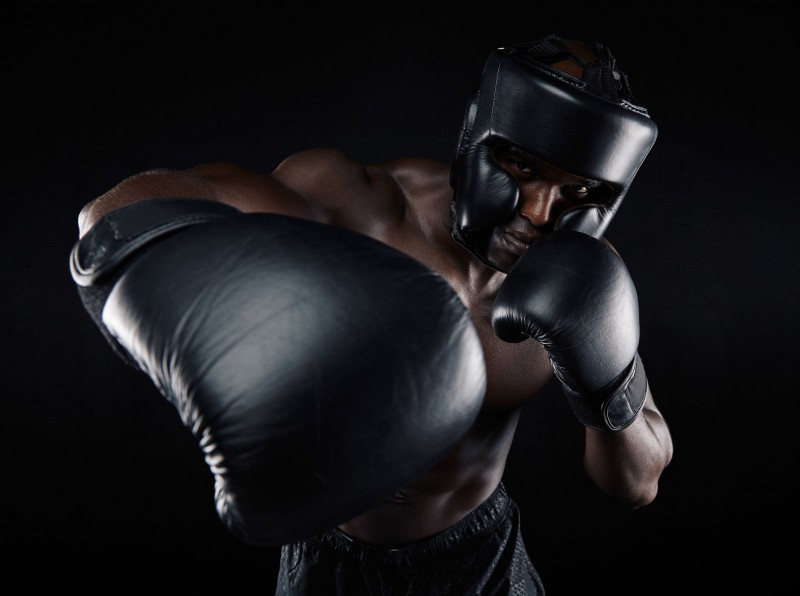

Best.